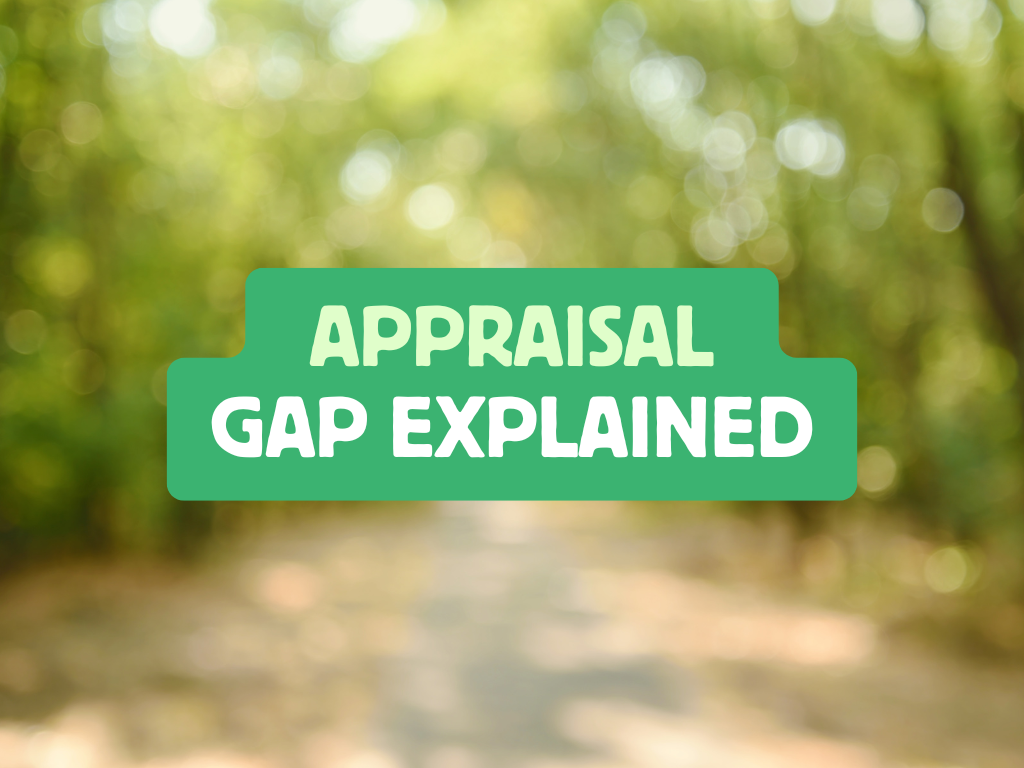What Is an Appraisal Gap? A Guide for Rhode Island Home Buyers
Understanding appraisal gaps can help you stand out in a competitive market and make confident decisions on your home purchase.
Why Appraisal Gaps Matter in Rhode Island’s Spring Market
In Rhode Island’s spring real estate market, competition is fierce. Most homes receive 4–6 offers or more, often selling for above list price. As a result, prices are rising faster than appraisers can keep up.
Appraisers base home values on recently closed sales—not what’s currently happening in the market. This creates a lag. When a home sells for more than recent comps (aka comparable properties), it might appraise for less than the offer price. That difference is called an appraisal gap. It’s important that Buyers understand their options when submitting a competitive offer and offering an appraisal gap can be a smart strategy–but it’s important to weigh the pros and cons. As always, I’m here to guide you through your options and to provide you the insight that you need in order to make informed decisions!
What Is an Appraisal Gap?
An appraisal gap is the difference between what a buyer offers and what the bank says the home is worth (based on the appraisal). Since the bank will only finance the appraised value, any difference must be handled by the buyer and seller.
Buyers can offer to cover some or all of that gap to make their offer more competitive—but it’s important to understand the risk and your options.
How Does an Appraisal Gap Work?
🔹 Example 1: Partial Appraisal Gap Coverage
- Offer Price: $500,000
- Appraised Value: $480,000
- Appraisal Gap Offered: $20,000
The buyer agrees in advance to bring $20,000 extra to closing if the appraisal comes in low. Since the home appraised at $480,000, and the buyer offered $20,000 gap coverage, the deal moves forward with no renegotiation.
🔹 Example 2: No Gap Coverage – Renegotiation Required
- Offer Price: $500,000
- Appraised Value: $480,000
- Appraisal Gap Offered: $0
In this case, the buyer and seller must renegotiate. Options include lowering the price, splitting the difference, or the buyer walking away if no agreement is reached.
🔹 Example 3: Full Appraisal Gap Coverage
- Offer Price: $500,000
- Appraised Value: $460,000
- Appraisal Gap Offered: Full coverage
The buyer agrees to cover the entire $40,000 difference. This makes their offer very strong, but also increases financial risk. The buyer will need extra cash or adjust their loan strategy to move forward.
Can You Adjust Your Down Payment Instead?
Yes! One option is to shift your down payment strategy to help cover an appraisal gap. Here’s how that works:
💡 Down Payment Shift Example:
- Offer Price: $500,000
- Appraised Value: $480,000
- Original Plan: 20% down = $100,000
Instead of putting 20% down, the buyer reduces their down payment to 10% of the appraised value ($48,000). This frees up $52,000 in cash. The buyer then uses $20,000 of that to cover the appraisal gap and keeps the rest for closing costs or reserves.
Note: This may increase your monthly payment and require mortgage insurance.
Pros and Cons of Offering an Appraisal Gap
| Pros | Cons |
|---|---|
| Makes your offer stronger in a competitive market | May require more cash at closing |
| Gives sellers confidence that the deal won’t fall through | You may pay more than the appraised value |
| Can help win bidding wars | Could lead to higher monthly payments if down payment is adjusted |
Final Thoughts: Is an Appraisal Gap Right for You?
Not every buyer needs or should offer an appraisal gap. But in a market where multiple offers are the norm, understanding this option—and how to plan for it—can give you a real edge.
The key is to talk to both your real estate agent (hi!) and your lender before making an offer. That way, you’ll know what’s financially comfortable for you and how flexible your loan structure can be.
Need help making sense of your options? Let’s schedule a buyer consult—I’ll walk you through the numbers and connect you with a trusted lender who can help break it down even further.



